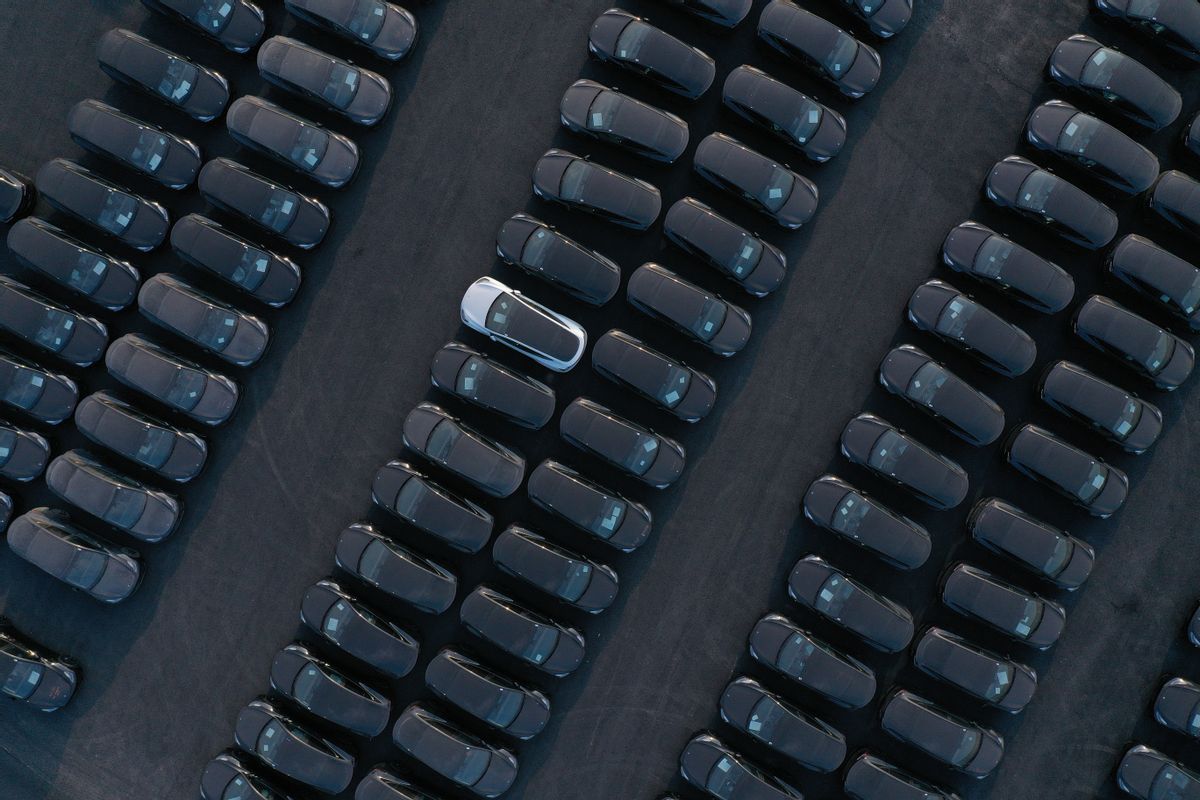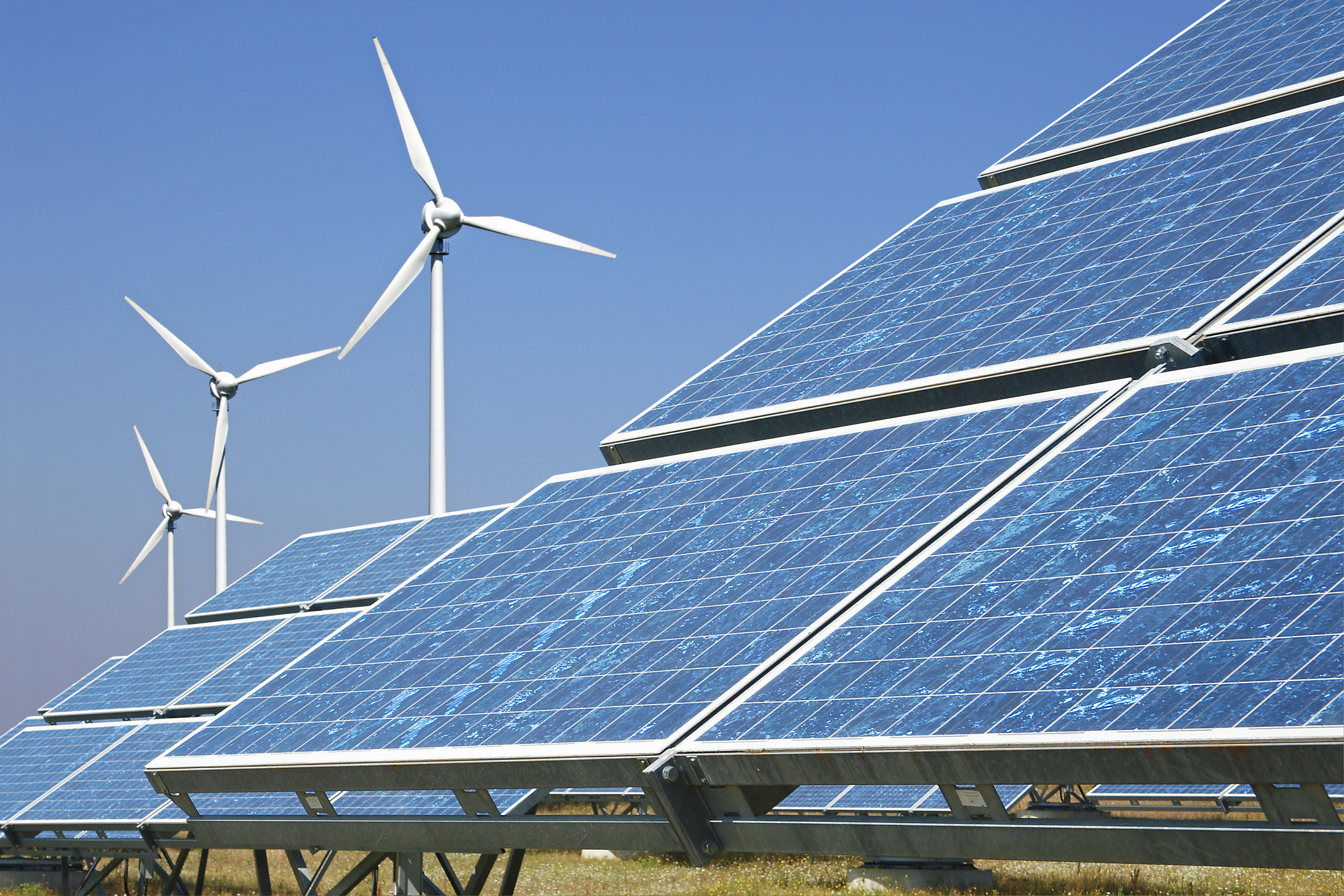While there are elements of truth to the Facebook post that makes this claim, it largely overgeneralizes the science behind batteries and electric vehicles, and does not list sources to support its statements. We fact-check the post point by point below.
In mid-March 2022, a widely circulated meme was sent to our editorial team for investigation, which we determined contains a mixture of true, false, and unproven claims. In a nutshell, the post argued that eco-friendly electric vehicles (EVs) were bad for the environment, and presented several vague, unsupported “facts” in an attempt to bolster the argument.
The Facebook post we received appeared to have started circulating online on March 12, 2022. The fact-checking website Lead Stories located a complete version of the post, which we have archived.
The entirety of the post is too long to share here, but we have broken out its primary claims below. For help evaluating them, we spoke with Elena Krieger, director of research at PSE Healthy Energy, a multidisciplinary research and policy institute focused on the adoption of evidence-based energy policy.
Claim: Batteries do not make electricity. Rather, they store electricity produced elsewhere, primarily by coal, uranium, natural gas-powered plants, or diesel-fueled generators.
It is true that batteries store electricity produced elsewhere, but what that electricity is generated by depends on the electric grid that the battery is connected to. (For more background on this, read "Energy Storage: How It Works and Its Role in an Equitable Clean Energy Future," by the Union of Concerned Scientists.)
California has specifically designed its Self-Generation Incentive Program (SGIP) to encourage charging at times when grid emissions are low, pointed out Krieger. As Jeff St. John wrote in an article for Green Tech Media, the goal of projects like SGIP are to incentivize power-producing technologies that contribute less to greenhouse gas emissions, such as solar or wind, than fossil fuels do. There are controversies with the technology, such as concerns that natural-gas-fueled generators used weren’t reducing the consumption of fossil fuels.
Battery facilities also allow for power from renewable sources to be produced when the wind is blowing windmills or the sun is shining on solar panels before being stored for later use during times of high consumption.
Claim: It is invalid to say that an electric vehicle is zero-emission.
An electric vehicle has zero tailpipe emissions, noted Krieger. However, emissions from both greenhouse gases and health-damaging air pollutants throughout the course of the vehicle’s use depend on how and where the vehicle is produced, what electricity is used to charge the vehicle, and how the vehicle is disposed of.
Union of Concerned Scientists analyzed data from 2018 and affirmed that EVs produce significantly fewer emissions than gasoline:
Based on where EVs have been sold, driving the average EV produces global warming pollution equal to a gasoline vehicle that gets 88 miles per gallon (mpg) fuel economy. That’s significantly better than the most efficient gasoline car (58 mpg) and far cleaner than the average new gasoline car (31 mpg) or truck (21 mpg) sold in the US. And our estimate for EV emissions is almost 10 percent lower than our previous estimate two years ago. Now 94 percent of people in the US live where driving an EV produces less emissions than using a 50 mpg gasoline car.
Claim: Forty percent of electricity generated in the U.S. is from coal-fired plants, so 40% of EVs on the road are coal-powered.
“Data from the U.S. Energy Information Administration (EPA) show that 22% of electricity generated in the U.S. was from coal plants in 2021, up from 19% the year before, so the first part of this statement is incorrect,” explained Krieger.
“The second part implies that the generation is proportional to vehicle charging. This assumption may be invalid for two reasons: 1) EV adoption is very high in places like California, which has minimal coal in its power mix, and 2) it depends on when the vehicles are charged, and which power plants dominate at the time the vehicles are charged.”
Claim: There are two orders of batteries: rechargeable and single-use. Batteries use toxic and heavy metals to chemically store electricity, including zinc, manganese, lithium, silver oxide, or zinc and carbon.
It is true that there are rechargeable and single-use batteries, both of which contain toxic materials of varying degrees.
“No technology is zero impact, but some battery chemistries use fewer toxic materials than others. For example, Tesla is phasing out cobalt from its batteries, albeit likely due to outside pressure, because cobalt is often mined by children in the Democratic Republic of the Congo (DRC). More on that below,” explained Krieger.
Claim: Sixty-eight percent of the world's cobalt, a significant part of a battery, comes from the Congo. These mines do not have pollution controls and employ children.
It is estimated that more than 70% of the world’s cobalt is produced in the Democratic Republic of the Congo (DRC). Foreign-owned firms, primarily Chinese, account for about 60% of global cobalt demand to be used in the rechargeable battery industry to be used in cars and electronic devices. Cobalt mining does come with environmental complications that may outweigh its use in rechargeable electronics. The nonpartisan research group Wilson Center reports that quick cobalt extraction contributes to global warming, while mining operations generate “incredibly high carbon dioxide and nitrogen dioxide emissions,” both of which can contribute to the greenhouse effect.
Human rights groups have documented “severe human rights issues” in mining operations, according to the Council on Foreign Relations. It is estimated that of the 255,000 Congolese mining for cobalt, 40,000 are children.
Cobalt increases battery life and has been a popular choice for EV batteries, but the U.S. Geological Survey notes that the mineral is also used in a plethora of other goods, including airbags, petroleum and chemical industries, paints, varnishes, dyes, and magnets, among many other goods and processes.
Claim: Under Einstein’s formula E=MV^2, it takes the same amount of energy to move a 5,000-pound automobile per mile as it does an electric one.
Snopes spoke with Brandon Baxley, an LA-based engineer and physicists, who said that “Einstein’s formula” is not the best concept to apply in this case.
“Einstein’s formula is more about how much total possible energy can be extracted from mass like, for example, in a nuclear explosion. It isn’t relevant to something like this,” said Baxley. “If [the original poster] is referencing Einstein’s formula, that means they aren’t entirely clear on the physics of the theory.”
However, that doesn’t mean the argument is entirely incorrect. Baxley noted that in this case, the theory of kinetic energy is a more appropriate concept. This follows that it would take the same amount of energy to move two vehicles of equal weight regardless of whether they are powered by gas or electricity
Over the last four decades, the average weight of a vehicle in the U.S. has increased from about 3,200 pounds to nearly 4,200 pounds for a variety of reasons, one of which is due to heavier battery packs in electric vehicles, according to a 2020 report by the EPA. Heavier vehicles require more energy to move than lower-weighted vehicles, but weight is just one component in addition to other factors like velocity and speed.
Claim: Many rechargeable batteries contain harmful chemicals like nickel, and are not recycled.
“I assume nickel-metal oxide is meant to refer to nickel-metal hydride, which is common in older Priuses. Nickel-cadmium batteries were common for small electronics but aren't used in cars or laptops or anything and are less common now. Lead-acid batteries, such as those used to start most cars, are also rechargeable. Nearly all lead-acid batteries are recycled, although it's worth noting these facilities aren't always safely managed,” explained Kireger.
“See, for example, the Excide plant in LA that was polluting a largely low-income Latino community for decades. Lithium-ion batteries are currently recycled at a low rate, largely because it is cheaper to make new batteries than recycle old ones, although there are a lot of start-ups working in this space (e.g. Redwood Materials, founded by former Tesla CTO). This is an area that needs additional funding, research, and regulations.”
Claim: Used batteries can break down and "leak" electricity; the “ruined flashlight” analogy.
Krieger explained that many batteries self-discharge at some rate (some higher than others), meaning that if a battery is left unused for a long period of time, it will likely have a lower state of charge over time. She furthered:
The "ruined flashlight" sounds like some kind of side-reaction occurred over time, likely producing materials that put stress on the battery and caused it to rupture, leaking out battery acid that damaged the surrounding casement. In terms of batteries being "run down," typically a battery is considered "dead" when it hits some threshold where the voltage of the battery drops below a certain level.
The poster is correct that you could theoretically drain a battery even more if you hooked it up to a circuit. The battery isn't exactly "leaking" electricity to the outside. It is likely undergoing additional electrochemical reactions that, ideally, wouldn't occur. I think what typically comes out is the electrolyte, not the electrode materials, since the electrolyte is more likely to be a liquid. You certainly shouldn't touch the electrolyte. It's often acidic.
In Oakland, at least, you're not supposed to throw batteries in trash; you're supposed to put them in a separate bag on your trash can so that the hazardous waste can be managed properly and not just thrown in a landfill. I do agree that you shouldn't just throw a lithium-ion battery in a landfill. Ideally, we learn low-energy and cost-effective ways to recycle them all. Lead-acid batteries, as noted, are usually recycled, and I think that is promising for our ability to manage the future lithium-ion battery waste stream.
Claim: Windmills and solar panels use more energy than they produce.
This point is part of the continued debate over whether renewable energies like solar panels and wind turbines can be considered green as they require extractive resources to build, many of which can be harmful to human health.
Silicon derived from quartz is the primary material used in the production of solar cells, a process that produces greenhouse gas emissions and requires manufacturers to handle toxic chemicals. Solar panels can also be sourced and made from a variety of materials, including silicon-based panels, gallium arsenide, cadmium-telluride (often referred to as "thin film", etc.
“These aren't usually all made at once (except in relatively rare multi-junction cells); instead, most manufacturers make silicon cells, and some others use other semiconductors such as cadmium telluride. Some parts of these are recycled, some aren't. The production process, like any materials processing, does need to be conducted in a way that protects environmental and human health,” said Kreiger.
The EPA notes that many of the materials are easily recyclable, including glass (about 75% of a solar panel), the aluminum frame, copper wire, and plastic junction box. Toxic chemicals, including cadmium, may also be present in solar panels that can make recycling more difficult. Even so, at least one U.S. manufacturer runs dedicated recycling facilities that recover semiconductor material like cadmium and tellurium.
The cited windmill is also slightly off and depends on the size and model the a turbine in question. For example, the Haliade-X turbine, which is among the largest in production, caps out to just over 900 tons. Wind turbines last an average of 25 years and about 85% of component materials — including steel, copper wire, electronics, and gearing — can be recycled, according to an article published by the Union of Concerned Scientists. As of this writing, it is true that used blades cannot be recycled. It is also true that windmills are energy intensive and that the blades are largely not recyclable. As we have previously reported, some windmills may not recoup their energy-construction costs, but it is untrue to say that no windmills will generate as much energy as was invested in building them. In some cases, a well-situated windmill could pay back the energy costs in under three years.
“The question is: how long must a windmill generate energy before it creates more energy than it took to build it? At a good wind site, the energy payback day could be in three years or less; in a poor location, energy payback may be never,” wrote earth scientist David Hughes in his 2009 book, Carbon Shift: How Peak Oil and the Climate Crisis Will Change Canada (and Our Lives).
Claim: A typical EV battery weighs one thousand pounds, about the size of a travel trunk, etc.
Data in the meme appears to be quoted from the Tesla website (900 pounds, 6,831 cells; this is old and likely varies by model). As Krieger notes, it’s difficult to generalize the weight and amount of materials in any given EV as “each manufacturer uses a different chemistry and the chemistries are constantly changing.”
A 2021 article published in Nature suggested that many EV batteries contain eight kilograms of lithium, 35 kilograms of nickel, 20 kilograms of manganese, and 14 kilograms of cobalt – but many companies are moving away from cobalt or advancing various technologies and the usage of certain materials.
 An aerial view of Moss Landing in California with the power plant pictured in the center. U.S. Army Corps of Engineers Digital Visual Library
An aerial view of Moss Landing in California with the power plant pictured in the center. U.S. Army Corps of Engineers Digital Visual LibraryClaim: California developed the “largest battery in the world.”
It appears that the original poster is referencing the Moss Landing battery project that replaced an old gas plant. Currently, it measures 400 megawatts, and operators are considering doubling it. Exactly what that expansion looks like remains to be determined.
“While some of the power charging this facility might come from solar and wind, there's no guarantee it will do so. It just charges and discharges from the grid. It might charge more with solar, since we're starting to see a surplus in the middle of the day, and it might help integrate wind power, and it might do other things like help limit the need for gas plants to ramp up quickly to meet the evening peak,” explained Krieger.
Conclusion
In short, the post claiming that EVs are no better for the environment than other energy sources is a form of copypasta in which social media users copy and paste content without verifying the claims made within it. A look through social media confirmed that the uncited “facts” had been reposted numerous times. While there are elements of truth to the post, it largely overgeneralizes the science behind batteries and EVs and does not list sources to verify the claims. As such, we have rated this claim as a “Mixture.”



